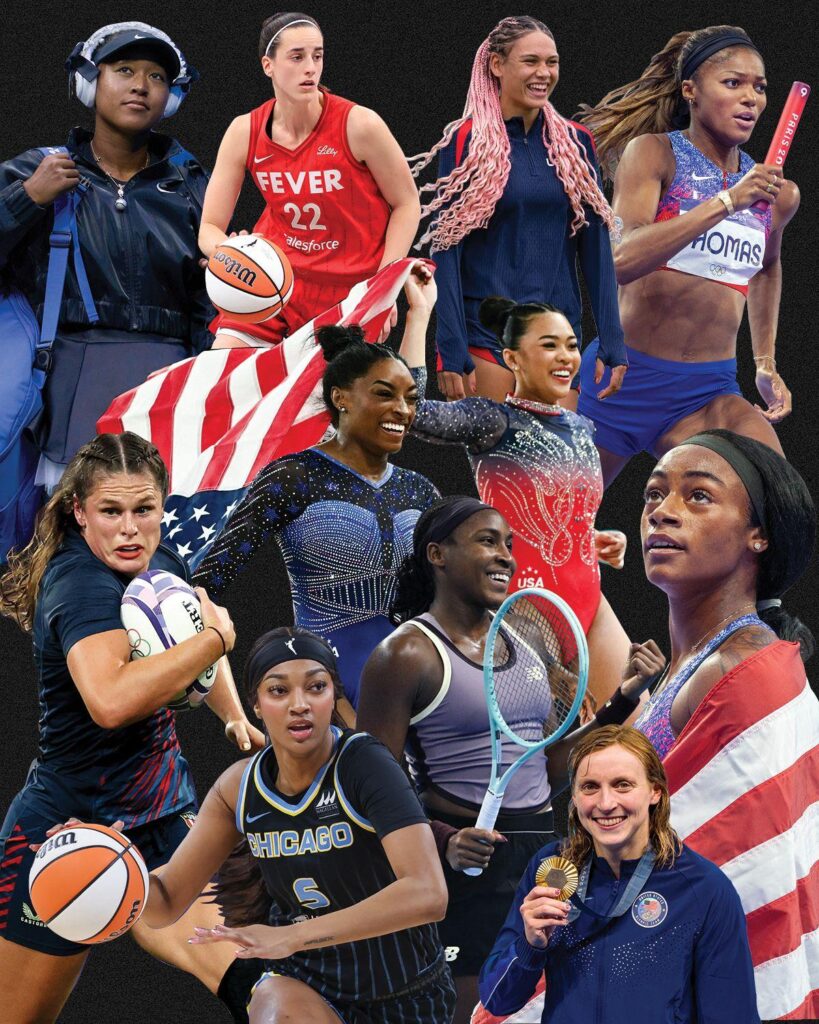In recent years, female athletes of color have faced heightened scrutiny over gender rules and identity, a challenge that reflects a persistent and troubling trend in sports. As governing bodies and media outlets scrutinize their eligibility and bodies, these athletes confront not only the pressures of competition but also deep-seated biases tied to race and gender. This ongoing debate underscores broader questions about fairness, inclusion, and the intersection of identity in athletics, highlighting issues that have persisted for decades in the world of sports.
Historical Context of Gender Scrutiny Faced by Female Athletes of Color
Female athletes of color have historically endured disproportionate scrutiny concerning their gender identity and adherence to sports regulations. This scrutiny is not a recent phenomenon but stems from a legacy of racial and gender biases embedded within the athletic world. Pioneering women such as Wilma Rudolph, Florence Griffith Joyner, and more recently, Caster Semenya, have been subjected to invasive tests and public debate over their bodies and identities. These actions often reflect broader societal discomfort with intersections of race, gender, and athleticism, reinforcing stereotypes that question both their femininity and legitimacy as competitors.
Several factors contribute to this persistent scrutiny:
- Historical reliance on binary gender norms that do not account for diverse identities.
- Scientific and medical approaches rooted in flawed or biased understandings of sex and performance.
- Media narratives that amplify controversies rather than contextualize athletes’ experiences.
| Era | Key Incident | Impact |
|---|---|---|
| 1960s | Gender verification introduced | Invasive testing for women athletes |
| 1980s | Florence Griffith Joyner scrutiny | Heightened media speculation on gender |
| 2009 | Caster Semenya testing | Global debate on intersex athletes |
Impact of Gender Verification Policies on Athletes’ Careers and Wellbeing
Gender verification policies have long placed an undue burden on female athletes of color, intensifying the scrutiny they face beyond their athletic performances. These regulations often hinge on invasive and controversial tests that overlook the complexity of gender identity and biological diversity. The ramifications extend beyond the track or field –Â many athletes report experiencing psychological distress, stigmatization, and career interruptions. The disproportionate targeting of women from marginalized communities reveals underlying biases in sports governance that equate deviation from narrow definitions of femininity with unfair advantage.
- Psychological toll: Anxiety, depression, and loss of confidence linked to public gender investigations.
- Career impact: Suspensions, disqualification from events, and disruption of sponsorship deals.
- Social ramifications: Heightened media exposure leading to public shaming and racialized narratives.
| Aspect | Reported Effects |
|---|---|
| Emotional Wellbeing | Increased stress, identity confusion |
| Professional Standing | Event bans, career uncertainty |
| Public Perception | Stigma, racialized scrutiny |
Navigating Identity and Inclusion in Competitive Sports
Female athletes of color have long been at the crossroads of competitive sports’ evolving debates on gender and identity. Their presence challenges traditional norms and exposes the often implicit biases embedded within athletic institutions. These athletes face not only the physical demands of competition but also heightened scrutiny around eligibility rules that govern participation based on gender criteria. The intersection of race and gender here is significant, as policies frequently fail to consider the broader social and cultural contexts, leading to disproportionate impacts on women of color.
Key aspects illuminating the ongoing challenges include:
- Increased media focus on athletes’ bodies and identities, often rooted in stereotypes.
- Regulatory frameworks that disproportionately target and exclude minority athletes.
- A lack of comprehensive support systems addressing both racial and gender complexities.
| Challenge | Impact | Response |
|---|---|---|
| Gender-testing policies | Public scrutiny and disqualification | Legal appeals and advocacy |
| Media stereotyping | Misrepresentation and stigma | Community support campaigns |
| Lack of intersectional policies | Unequal access and opportunities | Policy reform initiatives |
Recommendations for Equitable and Sensitive Gender Regulations in Athletics
To foster fairness while upholding dignity, regulations must be reexamined through a lens of inclusivity and respect. Stakeholders should prioritize transparency in establishing criteria that affect athletes’ eligibility, ensuring processes are not only clear but also consistently applied. Policies ought to move beyond rigid binaries and consider the intersection of race, gender identity, and biological diversity, acknowledging how systemic biases disproportionately impact female athletes of color. Central to this effort is the creation of independent review bodies, which bring multidisciplinary expertise to the table, ranging from medical professionals to advocates for equity.
Recommendations include:
- Implementing individualized assessments rather than blanket hormonal thresholds that may unfairly target certain groups.
- Investing in education and awareness programs to combat stigma and misinformation around gender diversity in sports.
- Consulting directly with affected athletes to center their lived experiences within policymaking.
- Regularly updating regulations in line with scientific advances and social understanding.
| Focus Area | Action Points | |||||||||
|---|---|---|---|---|---|---|---|---|---|---|
| Transparency | Clear procedures with public access | |||||||||
| Equity | Intersectional policy development | |||||||||
| Engagement | Athlete voices in decision-making | |||||||||
| Education |
To foster fairness while upholding dignity, regulations must be reexamined through a lens of inclusivity and respect. Stakeholders should prioritize transparency in establishing criteria that affect athletes’ eligibility, ensuring processes are not only clear but also consistently applied. Policies ought to move beyond rigid binaries and consider the intersection of race, gender identity, and biological diversity, acknowledging how systemic biases disproportionately impact female athletes of color. Central to this effort is the creation of independent review bodies, which bring multidisciplinary expertise to the table, ranging from medical professionals to advocates for equity. Recommendations include:
|





